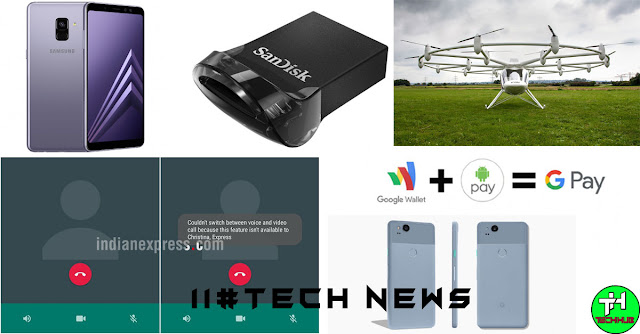Smartphone Innovations of 2017? 18:9 display| Portrait Mode| eSIM
The year 2017 was great as many smartphones were launched with some new interesting ideas, thoughts and innovations. Some flagship brands such as Google, Apple, Samsung brought their ultimate phones whether it was Pixel XL, iPhone X or Galaxy S8, into the world of technology. For the first time ever, Face ID was introduced and ZTE brought Dual Screen which provides four different screen modes.
18:9 Display Ratio
Historically most smartphones featured the display with a 16:9 aspect ratio which provided some experience of small screen theatres. However, in 2017 most of the brands move on to 18:9 aspect ratio display which provided a much longer and thinner screen.
It started with LG G6, which used the 18:9 ratio for its 5.7" 2880*1440 display. LG termed it as FullVision which actually made the G6 a bit smaller than the older LG V20, despite both having 5.7" display.After the launch of G6, even Samsung and Google launched their smartphones with 18:9 ratio.
Dual Camera/Portrait Mode
For the first time, Apple came up with the dual camera and portrait mode in iPhone 7. But this year, it was one of the technologies which were on top of trending list. Apple once again brought it in iPhone 8 and X with much improvement. Google also launched it in Pixel, OnePlus 5 and 5T came up with this feature. Even Mi A1 includes such technology.
eSim
No matter how advanced your smartphone is, you still need a good old-fashioned SIM card inside if you really want to use it as a normal phone. In 2017, Google introduced eSIM technology in Pixel 2 and Pixel 2 XL. Both the devices have an embedded SIM card designed which cannot be removed. The advantage of this technology is that you should be able to switch carriers with a software app menu.
120Hz Smartphone Screens
Another innovation which was not so common, was a display with 120Hz refresh rate, instead of normal 60Hz. It was first seen in Razer Phone launched in early November.
"A screen's refresh rate refers to how fast it can update a picture every second."In theory, if your display has a higher refresh rate, its image should be smoother and clearer, even while scrolling on your smartphone. Razer promoted the higher rate with another technology it developed called Ultra Motion, which syncs with the phone’s GPU to change its refresh rate depending on the needs of what’s being run. This maintains an optimal refresh rate when you play games, resulting in much smoother looking graphics with less screen tearing.








Comments
Post a Comment